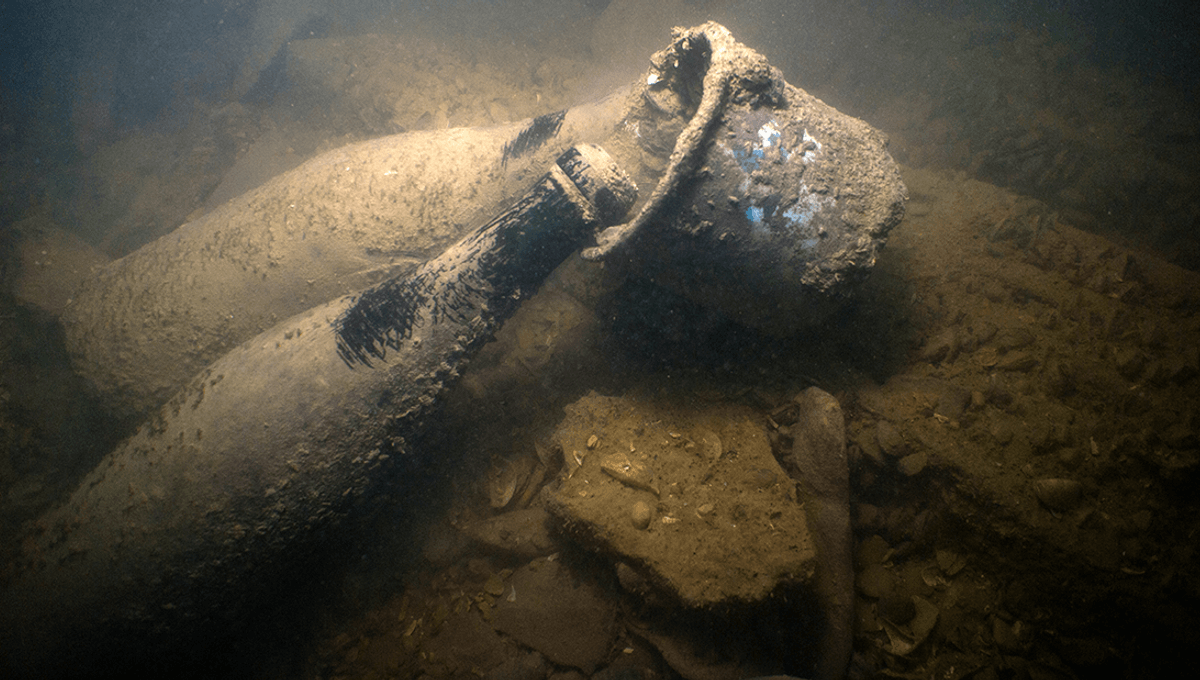
When the doomed submersible the Titan imploded as the crew attempted to explore the wreck of the Titanic in June 2023, people began asking a lot of questions about implosions, including why the Titanic itself didn’t implode despite being at a lower depth.
One such question, asked a number of times over the last year, is why champagne bottles found on the Titanic did not implode. Instead, there are bottles that appear to be largely intact.
“Remember how last year the Titan submersible got insta-crushed when going partway down the journey to see the wreck of the Titanic? For all their poor saftey guidelines and cut corners it was still a titanium case that was designed to handle such depths,” one such question asked in the highly esteemed Facebook group the Journal of Scientific Shitposting. “So how did a simple glass bottle filled with champagne not shatter?”
First up, let’s look at why implosions occur. Implosions are where objects collapse in on themselves, the result of a difference between internal and external pressure. When the pressure becomes too much for say a submarine’s hull to withstand, the result is a violent implosion, equalizing the pressure within and outside the vessel.
Implosions can occur at the surface too as long as there is lower pressure on the inside of an object vs the outside, e.g. by removing the air inside a tank to create a vacuum.
There isn’t an “except for bottles” or “except for the Titanic” rule. Parts of the Titanic did implode. The parts that did not implode avoided this particularly destructive event as the air had been released from within, causing the pressure to be equal on the outside and inside (conditions under which implosion will not occur).
So how did the bottle escape this fate? People have suggested that part of the answer is the increased pressure inside the champagne bottle, caused by the carbon dioxide within it. The pressure inside a champagne bottle is higher than you’d imagine, going up to around 6 bar (90 psi), with 1 bar being around atmospheric pressure at sea level. Today’s champagne is kept in bottles that can withstand up to 20 bar (290 psi), while a metal fastener is often used to keep the cork in place.
So at the start of the champagne bottle’s journey to the bottom of the ocean at least, it wasn’t at risk of implosion. Old champagne has been found at depths of 50 meters (164 feet) before, unbroken and even still drinkable. In fact, as it started sinking, it was at reduced risk of explosion, as the pressure difference between the inside and outside reduced, until a depth of about 60 meters (197 feet), where the pressure is around 6 bar (90 psi). Then the pressure difference would begin to increase significantly. The Titanic is about 3,800 meters (12,500 feet) deep, under around 381 bar (5,532 psi) of pressure.
Unless glass manufacturers of the 19th Century CE created bottles that could withstand such ridiculously high pressures “just for a laugh”, there must be another reason why they didn’t implode. Even if “strong glass” is part of the answer, the cork would be sucked into the bottle by the pressure difference before it reached the Titanic’s depths.
The clue is likely the mangled cork at the top of the bottle. For a bottle to survive imploding at this depth, like the intact sections of the Titanic, water must have got in there to equalize the pressure inside and outside of the bottle.
“I know you guys have mentioned uncorked champagne bottles discovered in the Titanic wreckage which lies even deeper at 3.8 km,” YouTube channel The Dropzone explained. “It would be amazing if the seal actually held, but I reckon all the seals have already been compromised and the pressure inside equalized with the pressure outside when the ship sank on its way down back in 1912.”
This could have happened quickly, like in the video demonstration, or more slowly as the cork headed down and became compressed itself by the enormous pressure.
[H/T: Journal of Scientific Shitposting]
Source Link: Why Did Champagne Bottles On The Titanic Not Implode?